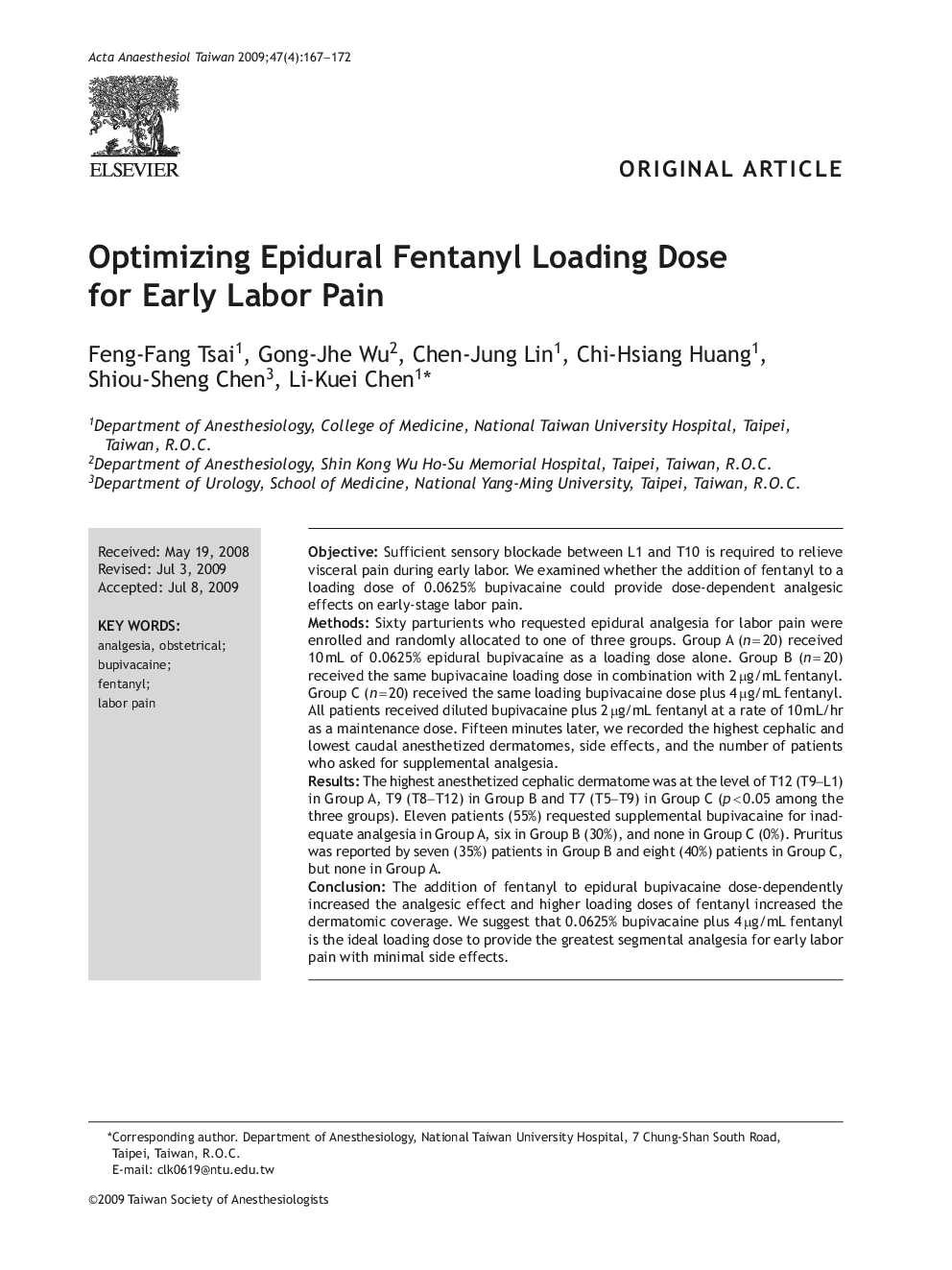| Article ID | Journal | Published Year | Pages | File Type |
|---|---|---|---|---|
| 2741650 | Acta Anaesthesiologica Taiwanica | 2009 | 6 Pages |
ObjectiveSufficient sensory blockade between L1 and T10 is required to relieve visceral pain during early labor. We examined whether the addition of fentanyl to a loading dose of 0.0625% bupivacaine could provide dose-dependent analgesic effects on early-stage labor pain.MethodsSixty parturients who requested epidural analgesia for labor pain were enrolled and randomly allocated to one of three groups. Group A (n = 20) received 10 mL of 0.0625% epidural bupivacaine as a loading dose alone. Group B (n = 20) received the same bupivacaine loading dose in combination with 2 mg/mL fentanyl. Group C (n = 20) received the same loading bupivacaine dose plus 4 mg/mL fentanyl. All patients received diluted bupivacaine plus 2 mg/mL fentanyl at a rate of 10 mL/hr as a maintenance dose. Fifteen minutes later, we recorded the highest cephalic and lowest caudal anesthetized dermatomes, side effects, and the number of patients who asked for supplemental analgesia.ResultsThe highest anesthetized cephalic dermatome was at the level of T12 (T9 – L1) in Group A, T9 (T8 – T12) in Group B and T7 (T5 – T9) in Group C (p < 0.05 among the three groups). Eleven patients (55%) requested supplemental bupivacaine for inadequate analgesia in Group A, six in Group B (30%), and none in Group C (0%). Pruritus was reported by seven (35%) patients in Group B and eight (40%) patients in Group C, but none in Group A.ConclusionThe addition of fentanyl to epidural bupivacaine dose-dependently increased the analgesic effect and higher loading doses of fentanyl increased the dermatomic coverage. We suggest that 0.0625% bupivacaine plus 4 mg/mL fentanyl is the ideal loading dose to provide the greatest segmental analgesia for early labor pain with minimal side effects.
